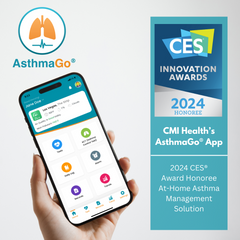Your cart is empty now.

Pulse Oximetry and Overnight Monitoring | CMI Health
What is Pulse Oximetry?
Pulse oximetry is a test used to measure the oxygen content (oxygen saturation, also known as SpO2 levels) of an individuals blood (John Hopkins, 2021). In addition to measuring SpO2, pulse oximetry also records overall pulse rate. Pulse rate is a simple yet important measurement that can tell a lot about a person’s overall physical health. Several factors including age, fitness, medication, body size, and physical wellness can affect a person’s average resting heart rate. Pulse oximetry has become so prevalent in the healthcare world that it is often regarded as one of the five major vital signs for understanding a person’s overall health (Chan et al. 2013).
The device used to take these measurements is known as a Pulse Oximeter. To learn more about pulse oximeters and their measurements, check out our blog Normal Readings on a Pulse Oximeter.
Why Might I Need Pulse Oximetry?
Incorporating the use of Pulse Oximetry into daily life may benefit several different types of users (John Hopkins, 2021). This may include:
- Those who have recently undergone surgery
- To monitor the effectiveness of lung or heart medications
- To observe a user’s ability to handle increased activity levels (i.e. Athletes or those suffering from respiratory disorders)
- Individuals recovering from severe illness such as COVID-19, Influenza (the Flu), or pneumonia.
- To monitor users with health conditions such as COPD, Asthma, Heart failure, Anemia, Lung Cancer, or Chronic Pneumonia
- To monitor those with sleeping disorders such as Sleep Apnea
For more information on who can benefit from using a pulse oximeter, click here.
Pulse Oximetry and Overnight Monitoring
There are many benefits to utilizing an at-home pulse to monitor. Not only are portable home use pulse oximeters more affordable, but they also allow users to track and record personalized SpO2 data that can then be shared and reviewed by their physician. For those with breathing disorders, pulse oximeters can alert the user or a family member to dangerous drops in SpO2 levels or pulse rate. Such alerts can make a huge difference in dangerous situations.
Sleep Apnea, a potentially dangerous sleeping disorder, is characterized by unexpected and repeated pauses in breathing (Mayo Clinic, 2021). Essentially, an individual with sleep apnea will suddenly cease breathing for an unknown amount of time, before suddenly beginning again. This can be very dangerous and disruptive to overall health, as it can hinder bodily functions and result in sleep deprivation. Pulse oximetry is a useful tool that can make a big difference in long term lung management of those diagnosed with sleep apnea. According to one recently published scientific article,
“Overnight pulse oximetry (OPO) has proven to be an effective and beneficial technique to determine the cardiorespiratory status of patients in both the inpatient and outpatient settings. It is a cheap, safe, reliable, simple, and accurate method of patient monitoring as compared to the expensive and labor-intensive method of multichannel polysomnography for detecting sleep-disordered breathing” (Singh et al. 2020).
Using Pulse Oximetry to monitor overnight lung function is a reliable method of obtaining accurate information regarding user lung function, breathing treatment efficacy, and general respiratory health (Singh et al. 2020). This can be applied to infants, children, adults, and the elderly as lung health affects everyone, regardless of age.
CMI Health offers a variety of Pulse Oximeters that are suitable for overnight usage. This includes our PC-66L Rechargeable Pulse Oximeter, PC-66H Battery Operated Pulse Oximeter, and the OxyKnight Watch.
It is good to note that there is a difference between spot checking and continuous monitoring. Continuous Monitoring is suggested for users that need to consistently monitor their oxygen levels throughout the day or overnight. Spot-check monitoring is suggested for users who only need to check their SpO2 levels periodically.

If you are only looking to monitor your pulse rate, and occasionally spot check, a Fingertip Pulse Oximeter is probably best for you. For those seeking to monitor their SpO2 levels consistently or continuously, a Handheld Pulse Oximeter or a wrist oximeter, like the OxyKnight Watch are probably the best suited devices to meet your needs.
Click here to see which sensors should be used for continuous monitoring and which should be used for spot checking.



